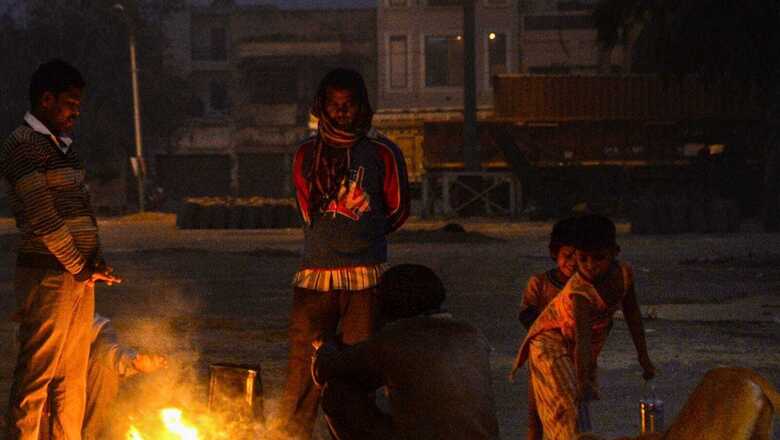
views
Cold conditions abated in north India, including Delhi, on Wednesday, though the relief is predicted to be short lived.
Fourteen trains to Delhi were reported to be running late due to dense to very dense fog in other areas, a Railways spokesperson said.
The Safdarjung observatory, Delhi’s primary weather station, recorded a minimum temperature of 6.3 degrees Celsius against 5.6 degrees on Tuesday and 5 degrees on Monday.
A weather bureau official said, “As per the IMD (India Meteorological Department) forecast, against yesterday’s (Tuesday) 24-hour rise of 1-2 degrees Celsius in maximum temperatures, these have further risen by 3-5 degrees over Punjab, Haryana-Delhi and north Rajasthan today (Wednesday), leading to complete abatement of cold day conditions over the region.
“Minimum temperatures are likely to rise by 2-3 degrees Celsius over the region by tomorrow (Thursday), giving further respite from the cold conditions.” At 5.6 degrees Celsius, Delhi’s minimum temperature on Tuesday was less than that of Dharamsala (6.2 degrees), Dehradun (7 degrees), and Nainital (7.2 degrees).
Weather experts said frigid north-westerly winds barrelling through the plains and reduced sunshine due to foggy weather had caused the spell of cold wave and below-normal day temperatures in northwest India.
A western disturbance led to a fresh spell of snowfall in the mountains on December 25-26 and cold northwesterly winds swept through the plains after its retreat.
The wind chill factor — a measure of the rate of heat loss from skin that is exposed to the air — was also high, they said.
A cold day is when the minimum temperature is less than or equal to 10 degrees Celsius below normal and the maximum temperature is at least 4.5 degrees below normal. A severe cold day is when the maximum is 6.5 degrees or more below normal.
The wind chill factor is based on wind speed. The higher the wind speed during cold weather, the colder it feels on the skin if a person is outside. Delhi clocked a top wind speed of 16 kilometres per hour on Tuesday.
Skymet Weather Vice-President (Meteorology and Climate Change) Mahesh Palawat said coldwave conditions in northwest India abated on Wednesday under the influence of a fresh western disturbance. However, the relief is likely to be short lived.
The minimum temperature will drop again after the western disturbance, characterised by warm moist winds from the Middle East, retreats, he said.
The Safdarjung observatory logged a maximum temperature of 21.8 degrees Celsius, a notch above normal.
The national capital shivered under a severe cold day on Monday, with the maximum temperature dropping 10 notches below normal at some places.
The Safdarjung observatory recorded a maximum temperature of 15.6 degrees Celsius on Monday, six notches below normal and the lowest day temperature in December since December 17, 2020.
It logged a maximum temperature of 17.2 degrees Celsius on Tuesday.
An IMD official said fog duration, intensity and area covered reduced significantly on Wednesday morning across north India, including Delhi-NCR.
“All airports in Delhi and Uttar Pradesh only have shallow fog. Chandigarh also reported shallow fog. However, Pathankot, Jammu and Amritsar have dense fog today (Wednesday),” the official said.
According to the IMD, ‘very dense’ fog is when visibility is between 0 and 50 metres, 51 and 200 metres is ‘dense’, 201 and 500 ‘moderate’, and 501 and 1,000 ‘shallow’.
In the plains, the IMD declares a cold wave if the minimum temperature dips to four degrees Celsius or when the minimum temperature is 10 degrees Celsius or below and is 4.5 notches below normal.
A severe cold wave is when the minimum temperature dips to two degrees Celsius or the departure from normal is more than 6.4 degrees Celsius.
Read all the Latest India News here

















Comments
0 comment